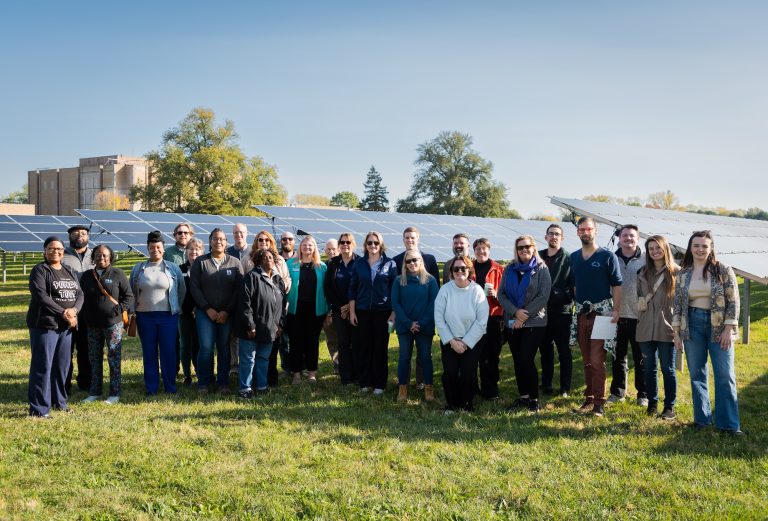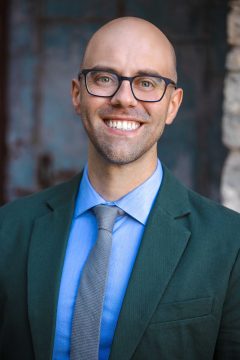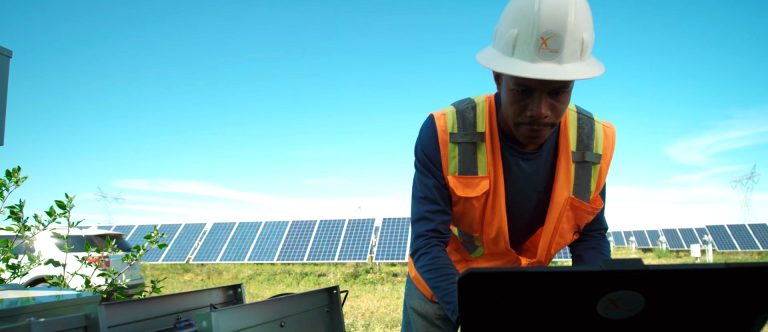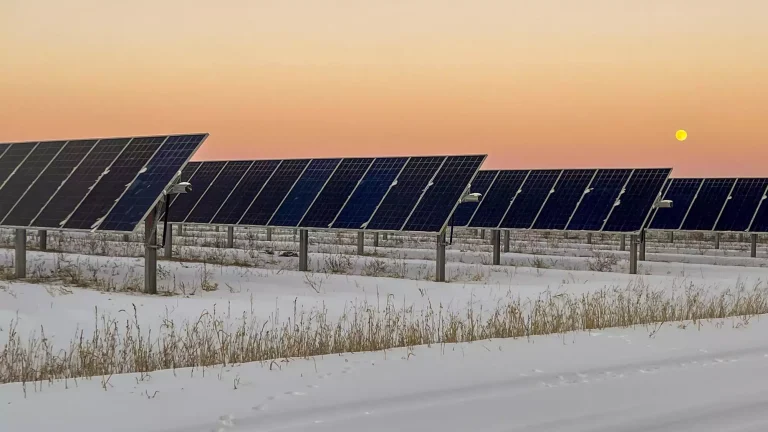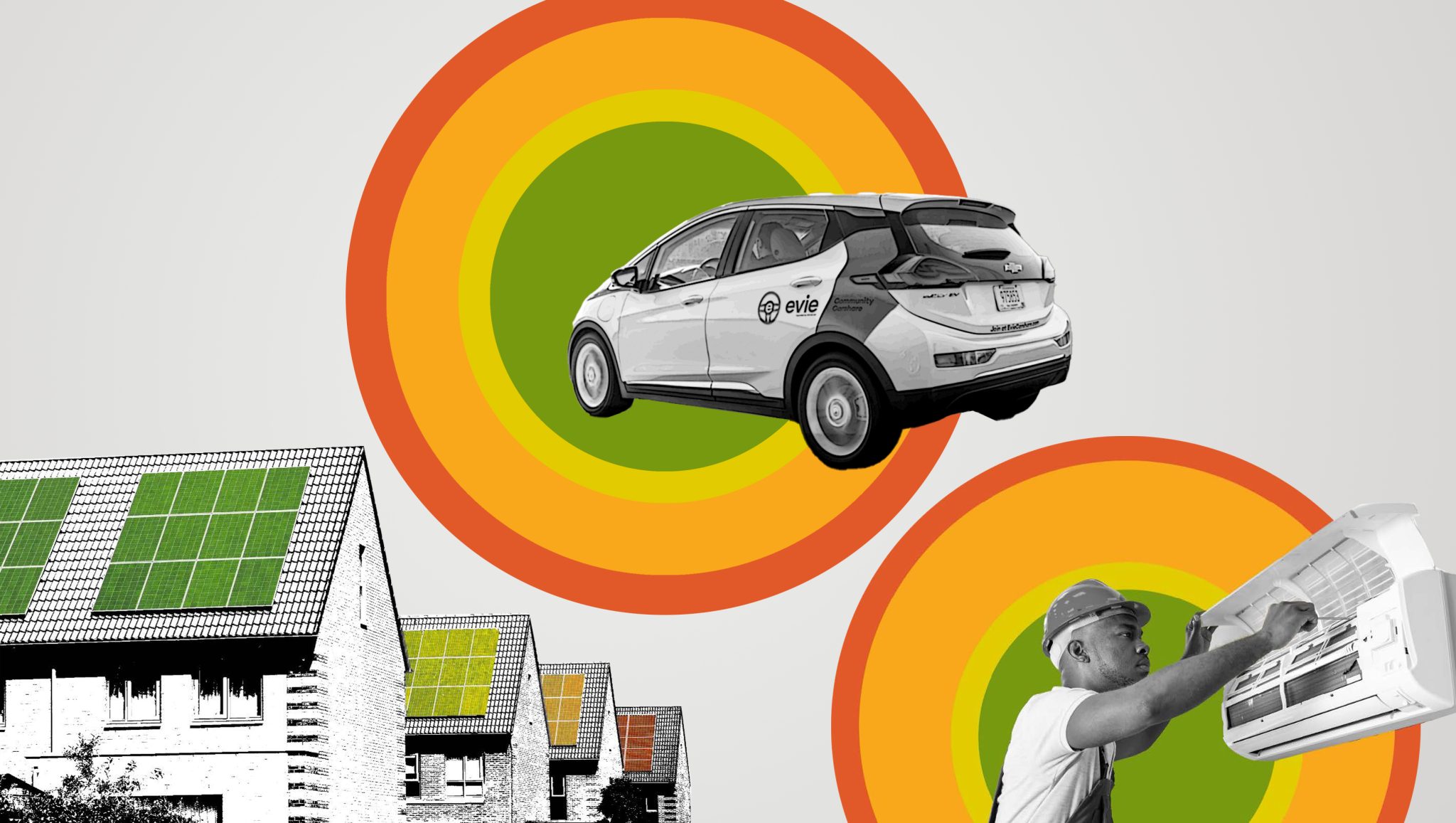
In April 2024, McKnight together with our partners celebrated a huge win for climate and equity. The Environmental Protection Agency (EPA) announced Greenhouse Gas Reduction Fund awards, which will deploy $20 billion in funding to mobilize private capital and deliver clean energy and climate solutions (such as heat pumps, home efficiency, electric vehicles, and more) to communities across America, particularly those with the greatest need and opportunity. Additionally, the Environmental Protection Agency announced a $7 billion Solar for All program that will create and expand solar energy programs for communities across the Midwest, particularly those who would not have had access otherwise.
Ben Passer, senior program officer with our Midwest Climate & Energy program, shares more of what he calls “a sea change for climate and equity investments,” and McKnight’s support that led to this historic moment.
“The Greenhouse Gas Reduction Fund presents our greatest opportunity yet to move financial capital at the scale that our climate and equity goals require.”– BEN PASSER, SENIOR PROGRAM OFFICER
How would you characterize how significant this funding is for people in the Midwest—neighborhoods, homes, businesses, and residents? Why is it critical that these resources are driving toward communities that have the most need and opportunity?
Ben Passer: The market for clean energy solutions is growing and evolving rapidly—but we know it isn’t reaching everyone in an equitable way. Solar installations and electrified appliances sometimes call for costly upgrades, and community solar subscriptions and electric vehicle purchases often require high credit scores to qualify. Even whole-building or community-level projects, such as geothermal systems, are often seen as too small for larger investors, but too large for traditional philanthropic capital like grants.
For these reasons and more, the programs and products that the Greenhouse Gas Reduction Fund awards will help create or expand will be truly transformational for residents, communities, and businesses throughout the Midwest. The purpose of GGRF is to address market gaps and systemic barriers to the equitable deployment of clean energy—in other words, it’s not just about “deploy, deploy, deploy,” it’s about how and where clean energy solutions are deployed and who can access them, as well as the jobs they create.
How and when will the EPA deploy these grants and make sure people can access them?
Ben: The EPA first announced $20 billion in grant funding within Greenhouse Gas Reduction Fund under two competitions: the National Clean Investment Fund (NCIF) and the Clean Communities Investment Accelerator (CCIA). Later in April, they announced another $7 billion Solar for All program, also within GGRF, which is specifically designed to support rooftop solar, residential-serving community and shared solar, and energy storage projects.
Importantly, at least 50% of National Clean Investment Funds and 100% of both Clean Communities Investment Accelerator and Solar for All funds will benefit disadvantaged communities. As the single largest grant program within the Inflation Reduction Act, it is a huge win that GGRF will provide capital to grow projects and wealth-building opportunities that traditional lending entities and structures wouldn’t, due to systemic, structural, and institutional barriers.
The EPA has a statutory deadline to obligate all GGRF funds by September of this year, and is on track to do so. They will finalize contracts with awardees over the next couple of months, and release funds shortly after. Once funds land with awardees, there will be a lot of work to do to organize themselves and partners (as these are massive, multi-actor awards), yet hopefully in 2025 there will be clarity on where and how funding will flow. Within a couple of years, we will see a more equitable and accessible clean energy economy—with more clean energy available to folks who want it, and career pathways for those who haven’t historically had access.
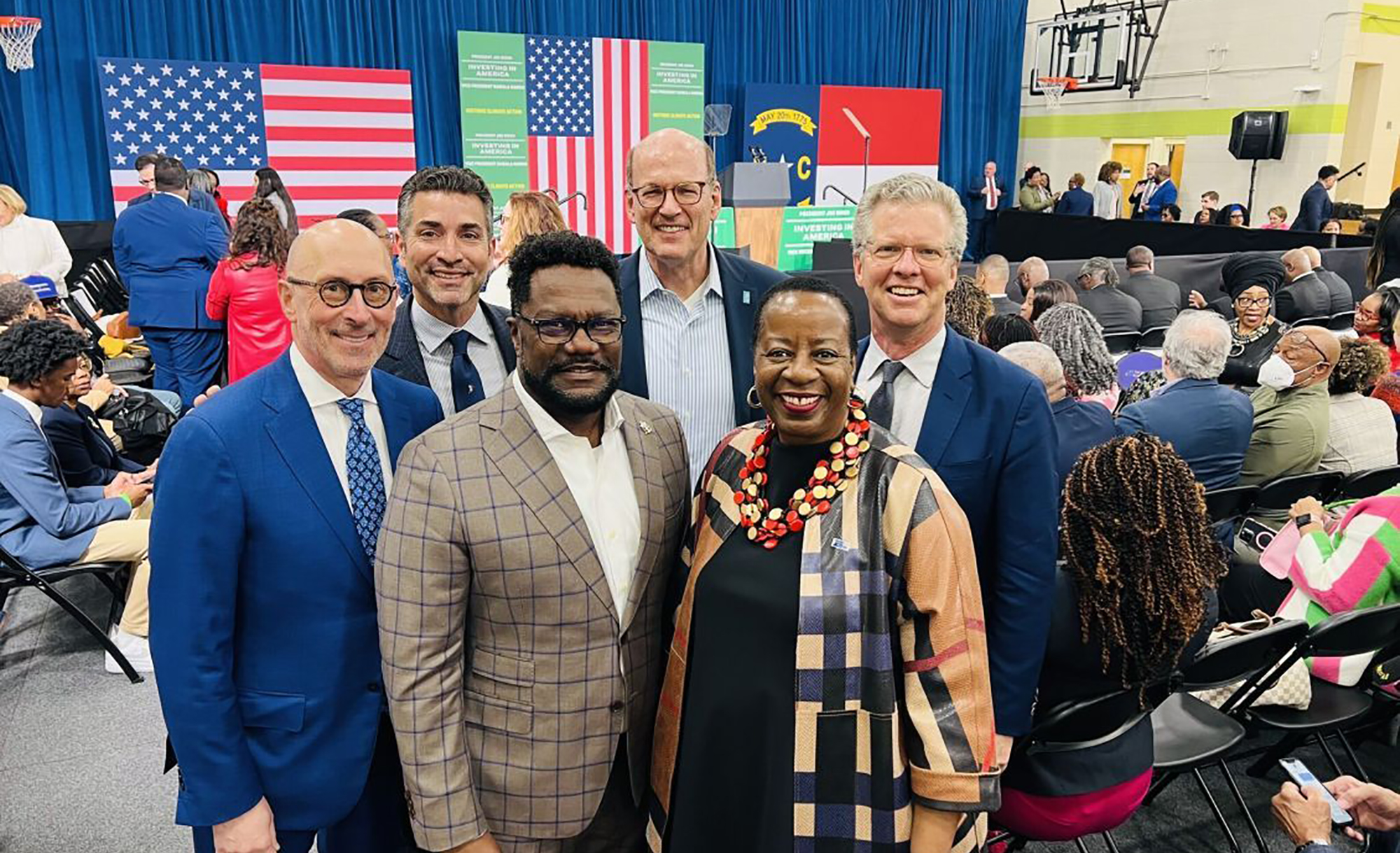
Who are some of the award recipients and what is most important to know about them?
Ben: The awardees of the National Clean Investment Fund are Power Forward Communities, Coalition for Green Capital, and Climate United; the awardees of the Clean Communities Investment Accelerator are Opportunity Finance Network, Inclusiv, Justice Climate Fund, Appalachian Community Capital, and Native CDFI Network. These awardees represent an impressive range of expertise, sectoral focus, and communities served. Importantly, several of the awards went to multi-sector coalitions, demonstrating the importance of cross-sector collaboration to make GGRF a success, as well as community development finance institutions, affirming their important role as trusted community-oriented lenders.
Partners across the Midwest received significant Solar for All grants, including Indiana Community Action Association, Minnesota Department of Commerce, Wisconsin Economic Development Corporation, Illinois Finance Authority, Michigan Department of Environment, Great Lakes, and Energy, Ohio Office of Budget and Management, Midwest Tribal Energy Resources Association, and Growth Opportunity Partners, Inc. If the previous GGRF awards were the “EV motor” to accelerate equitable financing for clean energy, I think of Solar for All as the “chassis”—the bedrock investment that will help ensure broader benefits.
“Through our grantmaking, investments, and relationships, McKnight has been proud to support the ecosystem of partners that made this milestone possible.”– BEN PASSER, SENIOR PROGRAM OFFICER
What role has McKnight played in supporting the ecosystem of partners that led to this milestone moment?
Ben: For more than a decade, McKnight’s climate program has supported clean energy coalition building in Minnesota and the Midwest. Several years ago, we began supporting Inclusive Prosperity Capital for their work to expand their clean energy financing products in the Midwest and lay the groundwork for a green bank in Minnesota, dovetailing with a feasibility study and stakeholder interviews led by Coalition for Green Capital, which we also supported. As a Foundation, we have multiple tools we can deploy to advance our mission. Grantmaking is one important tool, and so is the use of our endowment through investments. This was a great moment of synergy where grantmaking and investments aligned, and so around this time, our Investments team also made a $5 million program-related investment to Inclusive Prosperity Capital to support their lending programs.
As the federal landscape shifted, both partners were major players in making the case at the federal level for a national green bank, building off their own successes and lessons learned. Following the passage of the Inflation Reduction Act, McKnight began convening our grantee partners in Minnesota, as well as our Midwest funding partners, to understand the implications of the Inflation Reduction Act and shape on-the-ground readiness in the Midwest. Several of our grantee partners were also leading voices in support of the Minnesota Climate Innovation Finance Authority (MnCIFA), Minnesota’s first green bank.
Today, our president, Tonya Allen, serves on the board of Power Forward Communities, one of the National Clean Investment Fund awardees. We are also in close relationship with MnCIFA and other emerging green banks around the Midwest to understand needs and opportunities they are seeing and how philanthropy can best support.
At McKnight, we say that the highest expression of our mission is at the nexus of racial equity and climate action. These Greenhouse Gas Reduction Fund awards invest billions of dollars in clean technologies and focus those investments on the communities and areas that have historically been excluded from investments and been actively harmed by past decisions and policies. Through our grantmaking, investments, and relationships, McKnight has been proud to support the ecosystem of partners that made this milestone possible.
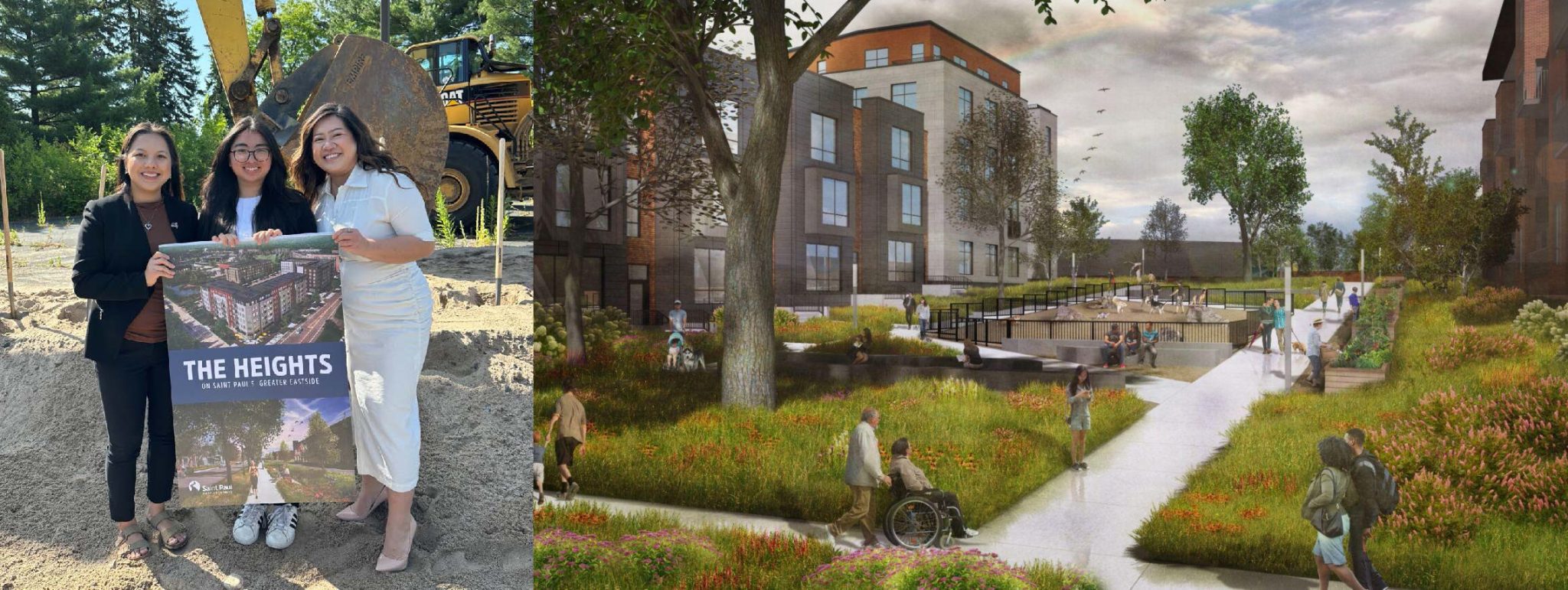
McKnight’s support and advocacy also led to Minnesota’s first green bank. Can you explain how that happened, and what has been the impact of that locally?
Ben: As Inside Philanthropy reported in early May, Minnesota passed a landmark community solar policy in 2013, and yet many projects could not get financing. Inspired by green banks launched in Connecticut and New York, McKnight began supporting state advocacy and policy, including a feasibility study in 2020, as well as convening Midwest funders on the topic. These efforts led to Minnesota establishing a green bank in 2023, known as MnCIFA, which the Minnesota Legislature seeded with $45 million, and also has potential to receive additional funds from the Greenhouse Gas Reduction Fund and institutional investors. McKnight provided additional capacity funding to ensure the bank is a success.
Green banks are mission-driven institutions that use innovative financing to accelerate the transition to clean energy and fight climate change. In late March, MnCIFA made its first award: $4.7 million loan to the Heights. This loan is a crucial first step in allowing the Heights development to construct and operate a district geothermal energy system on the 112-acre property on Saint Paul’s East Side. Formerly known as the Hillcrest Golf Course, the Heights aims to create a mixed-use development including at least 1,000 housing units and 1,000 jobs, with all the multifamily and light industrial buildings connected to the geothermal energy system.
This is a unique opportunity to model how a redevelopment project can achieve community-scale climate action and advance equity through clean and affordable heat, reducing emissions from Saint Paul buildings and addressing energy burden.
MnCIFA will continue developing plans to distribute more funds this summer, including stakeholder outreach processes and the formation of an investment strategy, and the hope is that it will help move funding from programs like the Greenhouse Gas Reduction Fund.
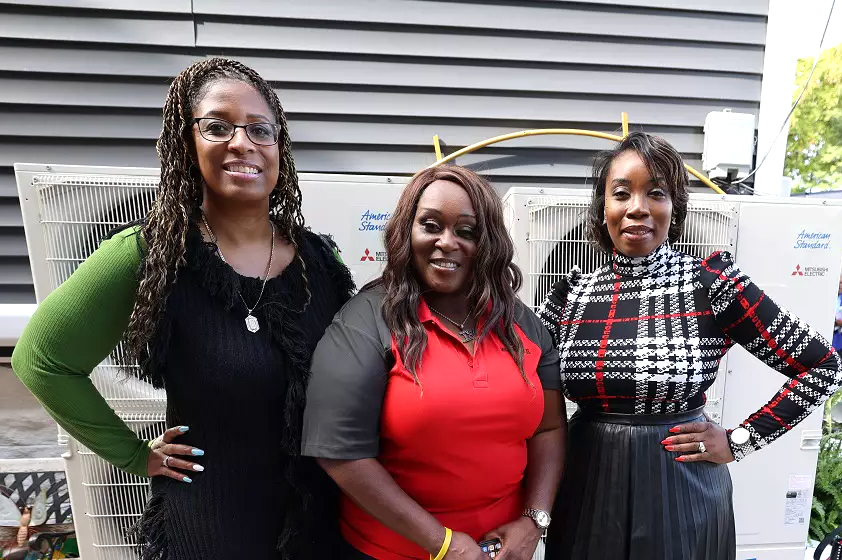
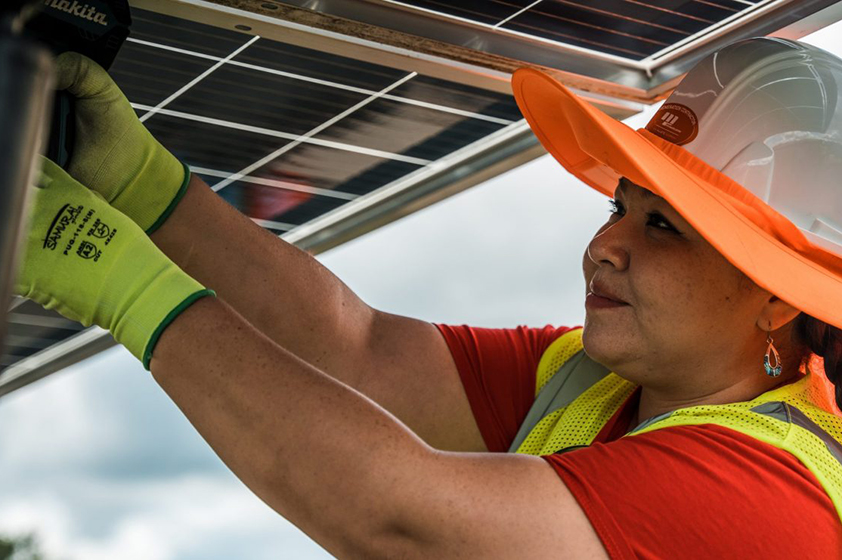
“We have not just an opportunity but an obligation to create the first truly equitable transition in our nation’s history.”– BEN PASSER, SENIOR PROGRAM OFFICER
What gives you hope that a climate-ready, prosperous future is possible? What work still needs to be done to drive toward that?
Ben: I often say that we have not just an opportunity but an obligation to create the first truly equitable transition in our nation’s history. That is what gives me hope: the level of funding available, the level of activity in the climate and energy space, the amount of talent and brilliance working tirelessly at organizations across the Midwest—all of those elements combined have so much potential to create the world we envision.
But that world isn’t inevitable. We must ensure that organizations and decision-makers have the capacity they need to implement policies and programs. We must keep driving action and resources to reduce harmful pollution throughout our economy, especially sectors that aren’t as far along in reducing their emissions. And we must take care of and center people, including the hard-working folks in this space to support their rest, wellness, and development, as well as all the folks who bear the brunt of climate impacts and stand to benefit from this transition.
Advancing climate action and advancing equity is only an either-or choice if we choose to make it so. The Greenhouse Gas Reduction Fund presents our greatest opportunity yet to move financial capital at the scale that our climate and equity goals require.
